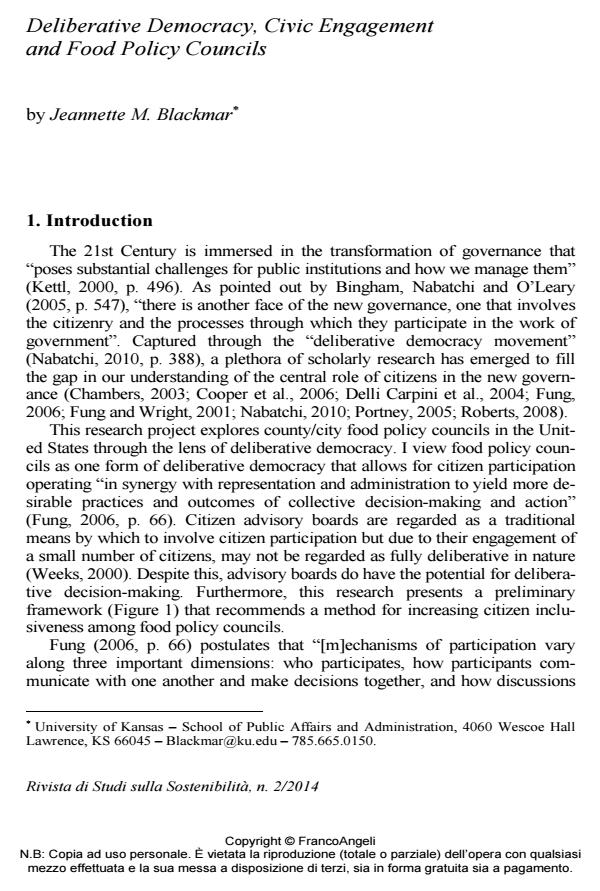Deliberative Democracy, Civic Engagement and Food Policy Councils
Journal title RIVISTA DI STUDI SULLA SOSTENIBILITA'
Author/s Jeannette M. Blackmar
Publishing Year 2014 Issue 2014/2
Language English Pages 15 P. 43-57 File size 195 KB
DOI 10.3280/RISS2014-002004
DOI is like a bar code for intellectual property: to have more infomation
click here
Below, you can see the article first page
If you want to buy this article in PDF format, you can do it, following the instructions to buy download credits

FrancoAngeli is member of Publishers International Linking Association, Inc (PILA), a not-for-profit association which run the CrossRef service enabling links to and from online scholarly content.
This paper explores county/city food policy councils in the United States through the lens of deliberative democracy. Food policy councils are emergent institutions operating in an advisory capacity to city/county government. Scholars claim that food policy councils are a primary means by which to allow input from citizens who have been marginalized by our current global industrial food system. The question remains as to whether or not food policy councils do in fact democratize the food system. The question of who participates on food policy councils is examined through case studies of five food policy councils in the United States. Findings indicate that a small number of lay stakeholders are represented on food policy councils but they are not inclusive of the diversity of people who are affected daily by the food system. The paper concludes with a preliminary framework for food policy councils.
Keywords: Citizen engagement, collaborative governance, deliberative democracy, food policy councils
- Understanding food democracy through practitioner viewpoints: a Q-method study of local US food policy councils Julia Behringer, in Agriculture and Human Values /2025 pp.2671
DOI: 10.1007/s10460-025-10768-3 - New England food policy councils: An assessment of organizational structure, policy priorities and public participation Cathryn A. Porter, Catherine M. Ashcraft, Alastair Iles, in Elementa: Science of the Anthropocene 39/2020
DOI: 10.1525/elementa.436 - Inviting Everyone to the Table: Strategies for More Effective and Legitimate Food Policy via Deliberative Approaches Rachel A. Ankeny, in Journal of Social Philosophy /2016 pp.10
DOI: 10.1111/josp.12141
Jeannette M. Blackmar, Deliberative Democracy, Civic Engagement and Food Policy Councils in "RIVISTA DI STUDI SULLA SOSTENIBILITA'" 2/2014, pp 43-57, DOI: 10.3280/RISS2014-002004